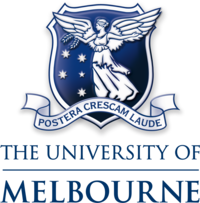
How do I become a optometrist?
Doctor of Optometry
- There are no mandated entry requirements.


Bachelor of Medical Science
- There are no mandated entry requirements.








Master of Clinical Optometry
- There are no mandated entry requirements.


Bachelor of Vision Science
- There are no mandated entry requirements.



Related occupations
Optical Dispenser
Optical Dispensers fit glasses and vision aids, prepare lenses, assist customers, and make adjustments while providing excellent service.
Orthoptist
An Orthoptist diagnoses and treats eye disorders, creates treatment plans, and requires strong interpersonal, analytical, and communication skills.
Ophthalmic Technician
Ophthalmic Technicians assist eye care professionals by performing eye tests, preparing patients, and aiding in diagnostic and surgical procedures.
Pediatric Optometrist
A Paediatric Optometrist diagnoses and treats vision issues in children, conducts eye exams, and prescribes lenses to support visual health and development.
Common questions
How much does an Optometrist earn?
In Australia, a full time Optometrist generally earns $2,260 per week ($117,520 annual salary) before tax. This is a median figure for full-time employees and should be considered a guide only. As you gain more experience you can expect a potentially higher salary than people who are new to the industry.
What are the job opportunities for an Optometrist?
The number of people working in this industry is likely to grow strongly in coming years. There are currently 4,200 people employed in this field in Australia and many of them specialise as an Optometrist. Optometrists may find work across all regions of Australia.
Source: Australian Government Labour Market Insights
How do I become an Optometrist?
A Bachelor of Vision Science/Master of Clinical Optometry is an ideal qualification if you’re planning a career as an Optometrist. You’ll develop the skills to diagnose eye diseases and vision problems, help clients improve their vision with optical aids, corrective lenses, therapy and medication.
Further reading


Choosing a security licence course in Australia: A step-by-step guide for jobseekers
10th November 2023)

